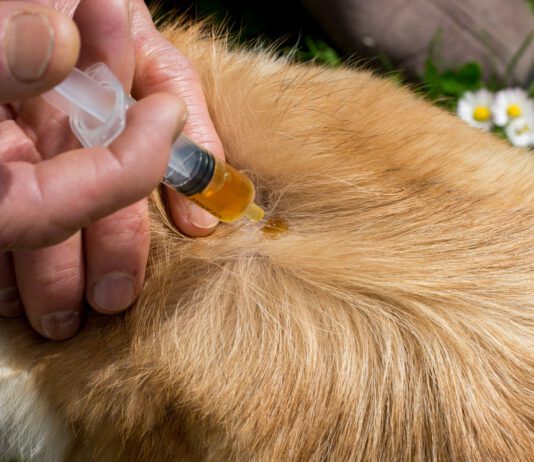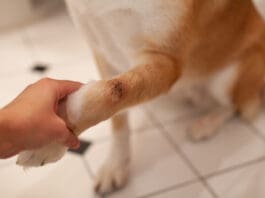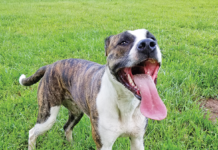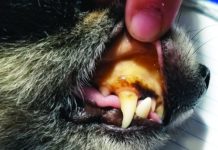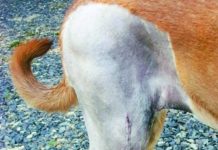Do You Know Your Dog’s Normal Heart Rate?
Learning your dog’s normal vitals – temperature, pulse, and respiration – is useful for detecting health problems or tracking your dog’s response to medication. It is also good information to provide when calling your veterinarian or an emergency clinic to make an urgent appointment .
What to Do If Your Dog Eats Marijuana (Edibles, Weed, Vape Cartridges, etc.)
Eating any product containing THC can be dangerous for your dog. While the amount and type of marijuana product consumed determines how serious the situation is, dogs who have eaten cannabis need to get to a vet.
Avoiding Heat Stroke in Dogs
Summer is a great time to be a dog owner. Long warm days mean plenty of outdoor activities like swimming, hiking, and playing. It’s...
Marijuana Toxicity in Dogs
The symptoms of marijuana toxicity will vary based on the dog, but general symptoms in dogs include depression, vomiting, urinary incontinence, ataxia (wobbliness), tremors, stupor, and bradycardia (slow heart rate). However, Dr. Wismer explains about 25% of dogs exposed to cannabis will become stimulated instead of depressed and show agitation and high heart rate. Dogs with severe marijuana toxicity can develop low blood pressure and coma.
Megaesophagus in Dogs: A Mega Problem?
The esophagus is a muscular, distensible organ that carries food from the mouth to the stomach. Megaesophagus is a common disorder in dogs that describes slow motility with resultant dilation of the esophagus. As a result of hypomotility, food will pool in the esophagus and stretch it. The stretching leads to damage to the nerves. This worsens hypomotility - a vicious cycle.
Tea Tree Oil Diffusers Are Toxic to Dogs
While some essential oils can benefit dogs, others are extremely dangerous - especially when used in their concentrated form. Tea tree oil demands extra caution around dogs, cats and small children. Although exposure to any essential oil is generally most concentrated when it directly contacts skin, tea tree oil diffusers and liquid potpourri present specific health concerns to dogs. These items release essential oils like tea tree continually into the air, risking exposure by inhalation.
A New Bone Cancer Vaccine for Dogs
Osteosarcoma is the most common type of bone tumor diagnosed in dogs, affecting an estimated 10,000 dogs each year in the U.S. alone. Too many owners are aware that this disease can be extremely aggressive with a poor prognosis.
Dog Stung By A Bee? Here’s How to Treat It
Hives, wheals, and welts are a moderate reaction to stings. Just like their human counterparts, dogs who have been stung can break out in unsightly hives. These are usually very itchy and uncomfortable. The first sign often noticed is the dog rubbing along furniture or scratching at the face and eyes. The hives may manifest as bright red streaks or lumps all over the body or be confined to a single place.
Teach Your Dog to Relax Around Bees
Just like a good skunking doesnt stop most dogs from going after those black-and-white critters again the next time (darn it!), there are many dogs who seem goaded into more intense bee-chasing behavior after an unfortunate encounter of the stinging kind. Conversely, there are also dogs who become literally phobic about all small, flying creatures after a stinging incident. Then there are those who develop an obsessive-compulsive behavior known as fly-snapping.
Liver Disease in Dogs
Signs of liver disease can include lethargy, decreased appetite, vomiting, diarrhea, bruising of the skin (small patches of bruising are called petechiae; larger patches are called ecchymoses), abdominal distention, weakness, and a yellow tint to the skin and gums (called jaundice or icterus).
Cranial Cruciate Ligament Repair for Dogs: Your Options
The truth is, we do not have a perfect solution for cranial cruciate ligament tears in dogs. Research is constantly evolving and we are still in search of the perfect fix. In humans, a synthetic or biologic ligament is placed where the damaged ligament used to sit. This was tried in dogs, but the outcomes were never good. The replacement ligaments were just not well tolerated. Consequently, something different had to be done.
Double TPLO Surgery for Dogs
As we learned in our independent research and from meeting with multiple veterinary surgeons, the TPLO surgery has become the gold-standard treatment for this kind of knee injury, especially in very large, strong, young, athletic dogs. While waiting for Sirius growth plates to close, we saw firsthand how conservative management worked - and then didnt. We were looking for a treatment option that gave Sirius the best chance at the kind of fun and normal life she deserved, one that would allow her to return to the activities and sports training that she loved.


